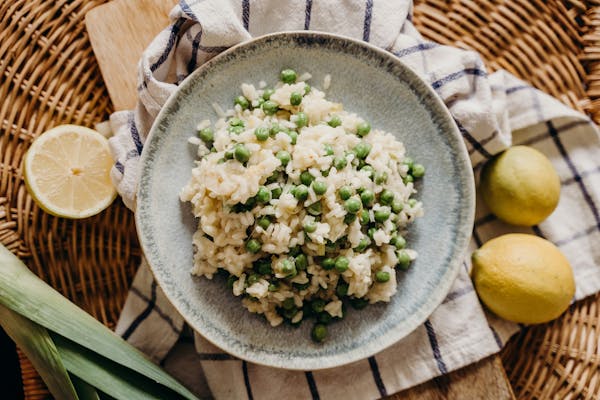
Introduction: The Global Significance of Rice
Rice is more than a humble grain; it is the cornerstone of countless culinary traditions across the globe. From creamy Italian risottos to aromatic Middle Eastern pilafs, rice holds the power to evoke comfort, nostalgia, and satisfaction. This tiny, versatile grain is a staple for over half the world’s population and has been cultivated for thousands of years. Our journey begins with a deep dive into the origins, varieties, and cultural significance of rice before exploring its most celebrated preparations.
A Brief History of Rice Cultivation
Rice has a history spanning at least 9,000 years. It first emerged in the Yangtze River basin in China and later spread to the Indian subcontinent, Africa, and beyond. By the time rice made its way to Europe via trade routes, it had already become a beloved staple in diverse diets.
Today, there are over 40,000 varieties of rice cultivated worldwide, each with distinct textures, flavors, and uses. To truly appreciate the world of rice, one must understand its regional diversity. From fragrant long-grain basmati and sticky short-grain sushi rice to nutty brown rice and arborio’s creamy consistency, every type offers unique culinary possibilities.
Exploring Risottos: Creamy Elegance in a Bowl
Risotto, an Italian classic, transforms simple rice into a rich, luxurious dish through a methodical process of slow cooking and constant stirring. The hallmark of a perfect risotto is its creamy, silky texture that flows on the plate but retains an al dente bite. Arborio, carnaroli, and vialone nano are among the preferred rice varieties for this dish due to their high starch content.
Classic Risotto alla Milanese
- Ingredients: Arborio rice, saffron threads, butter, grated Parmigiano-Reggiano, white wine, chicken or vegetable stock, onion.
- Method: The essence of a great risotto lies in the careful cooking of the rice. Onions are sautéed in butter before the rice is toasted, then slowly cooked by adding stock one ladle at a time. Saffron lends a striking golden hue and earthy aroma, creating a dish that epitomizes comfort and elegance.
Risotto Variations Across Italy
- Risotto al Nero di Seppia: Made with cuttlefish ink, this Venetian specialty is deeply savory and strikingly black.
- Risotto ai Funghi: Featuring porcini mushrooms, this dish embodies the earthy flavors of Italian forests.
- Risotto Primavera: Packed with fresh spring vegetables, this vibrant dish celebrates Italy’s agricultural bounty.
Pilafs: Aromatic and Fluffy Rice Creations
Unlike risottos, pilafs (or pilavs) are cooked by simmering rice in a seasoned broth, creating a fluffy, aromatic dish where every grain is distinct. Pilafs trace their origins to the Middle East and Central Asia, and they have traveled far and wide, evolving in each culture they touch.
Persian Jeweled Rice (Shirin Polo)
- Ingredients: Basmati rice, dried fruits (barberries, apricots, raisins), nuts (pistachios, almonds), saffron, orange zest, spices (cardamom, cinnamon).
- Method: Shirin Polo showcases the vibrant flavors of Persian cuisine, combining sweet, sour, and aromatic elements. Parboiled rice is layered with a syrupy mixture of dried fruits and nuts, then steamed to perfection.
Middle Eastern Chicken Pilaf (Kabsa)
- Ingredients: Basmati rice, chicken, tomatoes, onions, a blend of Middle Eastern spices (cardamom, cloves, black lime), raisins, nuts.
- Method: Kabsa is cooked in one pot, allowing the flavors to meld together beautifully. The rice absorbs the aromatic broth created by the chicken and spices, resulting in a dish that is rich and satisfying.
Asian Rice Staples: Beyond Sushi and Fried Rice
No culinary journey through rice is complete without a nod to the numerous ways it is prepared across Asia. In Japan, rice takes on a cultural significance that transcends food, becoming a symbol of prosperity and well-being. Chinese cuisine, on the other hand, offers a dazzling variety of rice-based dishes that span simple fried rice to elaborate banquets.
Japanese Sushi Rice (Shari)
- Ingredients: Short-grain sushi rice, rice vinegar, sugar, salt.
- Method: Preparing sushi rice requires meticulous rinsing to remove excess starch, ensuring a glossy, sticky texture. Once cooked, it is seasoned with a sweet-tangy vinegar mixture, creating the base for nigiri, maki rolls, and chirashi bowls.
Chinese Yangzhou Fried Rice
- Ingredients: Cooked long-grain rice, shrimp, char siu (roast pork), peas, carrots, eggs, soy sauce, green onions.
- Method: The secret to perfect fried rice lies in using leftover, chilled rice to achieve a distinct, non-sticky texture. Each grain is lightly coated with soy sauce, and ingredients are stir-fried at high heat for an aromatic finish.
South Asian Biryanis: Royal Rice Feasts
Biryani, a dish believed to have Persian roots, is synonymous with celebration and opulence in South Asia. It is a complex layering of fragrant rice, marinated meat or vegetables, and an array of spices. Biryani varies significantly by region, each version reflecting local ingredients and culinary techniques.
Hyderabadi Biryani
- Ingredients: Basmati rice, marinated chicken or mutton, saffron, fried onions, yogurt, green chilies, ginger-garlic paste, aromatic spices.
- Method: In this version, partially cooked rice is layered over marinated meat, then sealed with a dough lid and cooked slowly, allowing flavors to meld.
Vegetable Biryani
- Ingredients: Basmati rice, mixed vegetables (potatoes, carrots, beans), yogurt, spices, fried onions, nuts, raisins.
- Method: A vibrant, vegetarian take on the classic, this biryani features fragrant rice cooked with vegetables and richly spiced gravy, topped with saffron and nuts for added depth.
Latin American and Spanish Rice Dishes: Paellas, Arroz con Pollo, and More
Rice forms the base of many beloved Latin American and Spanish dishes. Paella, a Valencian specialty, is perhaps the most famous rice-based dish from Spain, but rice also finds itself in comforting arroz con pollo, arroz a la cubana, and more.
Traditional Spanish Paella Valenciana
- Ingredients: Bomba or Calasparra rice, rabbit, chicken, green beans, snails, saffron, smoked paprika, tomatoes, olive oil.
- Method: Cooked in a wide, shallow pan over an open flame, paella achieves a crispy bottom crust known as socarrat. Each bite offers a taste of Valencia’s rich history.
Arroz con Pollo (Latin American Chicken and Rice)
- Ingredients: Medium-grain rice, chicken, bell peppers, peas, onions, garlic, saffron or annatto, stock.
- Method: This comforting dish varies by region, but it often features rice cooked in a flavorful broth with seasoned chicken, vegetables, and vibrant spices.
Healthful Rice Creations: Exploring Brown, Red, and Black Rice
In modern times, health-conscious cooking has led to a revival of ancient grains, including brown, red, and black rice. These varieties are rich in fiber, antioxidants, and essential nutrients, adding both flavor and nutrition to everyday meals.
Black Rice and Mango Salad
- Ingredients: Black rice, mango, red bell pepper, cilantro, lime juice, sesame oil.
- Method: Black rice’s nutty flavor and striking color make it a visual and flavorful standout. This salad is light, refreshing, and packed with antioxidants.
Hearty Brown Rice and Lentil Stew
- Ingredients: Brown rice, lentils, tomatoes, onions, garlic, cumin, coriander, spinach.
- Method: Combining rice with lentils creates a protein-rich dish that is both comforting and wholesome.
Conclusion: Celebrating Rice Across Cultures
From creamy Italian risottos to aromatic Persian pilafs and spicy South Asian biryanis, rice is a universal thread that ties together diverse cultures and traditions. Its ability to absorb flavors, transform textures, and adapt to any cuisine makes it one of the most cherished and versatile ingredients. As we savor these dishes, we embark on a journey through history, culture, and culinary mastery—all inspired by a simple grain that continues to captivate palates worldwide.
